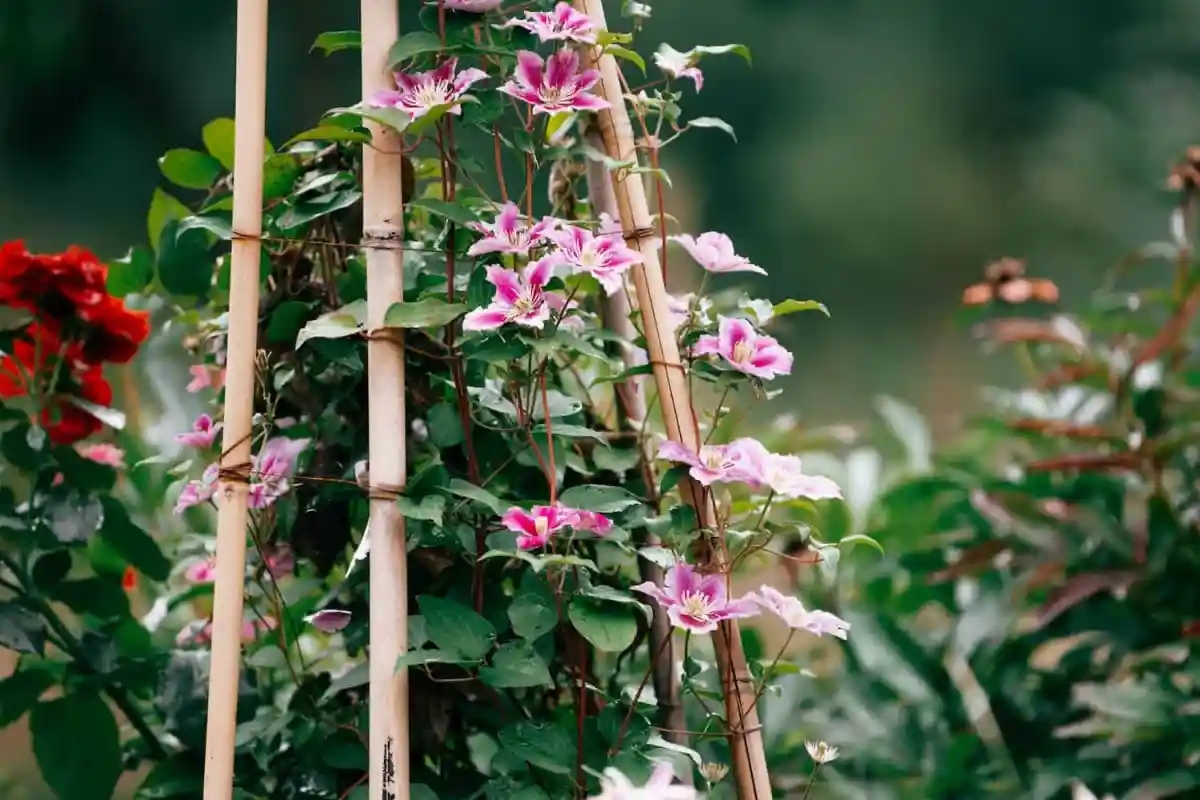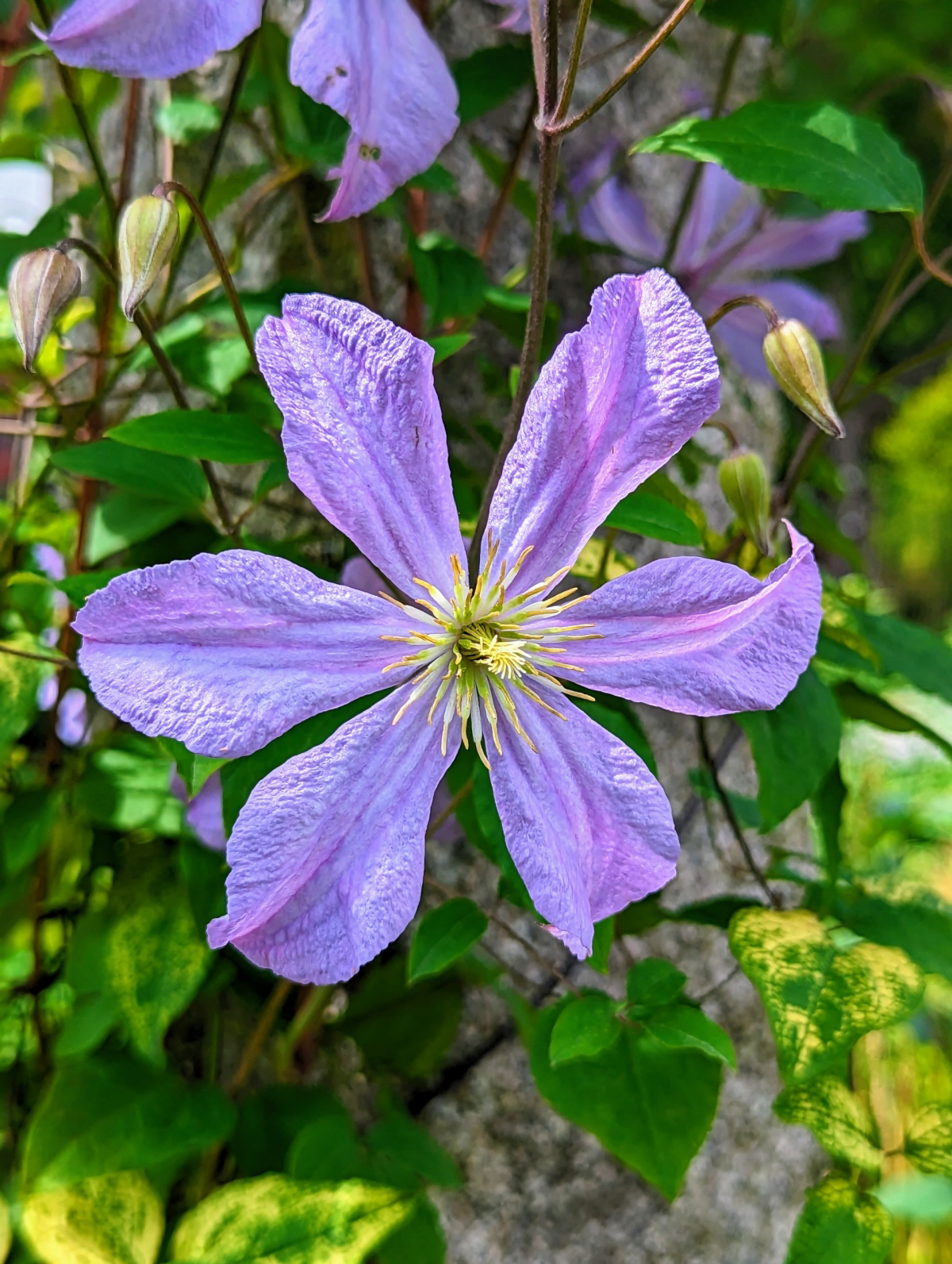How to Winterize Your Clematis Like a Pro: Complete Guide
The vibrant charm of clematis vines can transform your garden into a floral wonderland during the warmer months. But as winter’s icy fingers approach, it’s crucial to prepare these delicate beauties for the cold season. Fear not, for I’m here to guide you through the art of winterizing clematis. With a bit of care and attention, you can ensure that these beloved climbers emerge from hibernation stronger and more glorious than ever. So, let’s embark on this horticultural journey and get your clematis ready to brave the winter chill. Here is how to winterize your clematis like a pro: Time […]

The vibrant charm of clematis vines can transform your garden into a floral wonderland during the warmer months. But as winter’s icy fingers approach, it’s crucial to prepare these delicate beauties for the cold season. Fear not, for I’m here to guide you through the art of winterizing clematis. With a bit of care and attention, you can ensure that these beloved climbers emerge from hibernation stronger and more glorious than ever. So, let’s embark on this horticultural journey and get your clematis ready to brave the winter chill. Here is how to winterize your clematis like a pro:
Time to learn how to winterize clematis like a pro gardener

How to Winterize Your Clematis Like a Pro: Complete Guide
Getting to Know Clematis
Before we delve into the nitty-gritty of winterization, let’s take a moment to appreciate the stars of our gardening show – clematis vines. These versatile and enchanting plants come in various species and hybrids, each boasting its unique charm. Known for their stunning, often large, and vibrantly colored flowers, clematis vines can ascend trellises, fences, and even scramble through shrubs or trees. They thrive in different climates and add an air of elegance to any garden. Whether you have a classic variety like ‘Nelly Moser’ or a modern favorite like ‘Piilu,’ caring for clematis in winter ensures their health and vitality come spring.
This enchanting plant come in various species and hybrids

Essential Tools and Materials
Before we begin the winterization process, gather the necessary tools and materials:
- Pruning Shears: High-quality pruning shears are essential for shaping and trimming your clematis.
- Mulch: A thick layer of organic mulch provides insulation and regulates soil temperature.
- Garden Twine: This will help secure your clematis vines and prevent wind damage.
- Burlap or Fleece: Covering your clematis with burlap or fleece shields them from harsh winter conditions.
- Pots and Soil: For container-grown clematis, you’ll need pots and fresh potting soil.
- Watering Can: To ensure your clematis remains adequately hydrated throughout the winter.
Gather all of the necessary tools and materials for the task

Pruning for Protection
Early winter is the perfect time to prune your clematis. Start by removing any dead or diseased growth. Next, prune back the remaining vines to about 8–12 inches above the ground. This encourages strong, healthy growth in the coming season. Remember, different clematis varieties have specific pruning requirements, so be sure to research your particular type for precise instructions.
Early winter is the perfect time to prune your clematis

Insulating with Mulch
Once your clematis is pruned, it’s time to provide some insulation. Apply a generous layer of mulch around the base of the plant, covering the root zone. Mulch helps regulate soil temperature, prevents freezing, and keeps the roots cozy and protected during the winter chill.
Apply a generous layer of mulch around the base of the plant

Protecting Container-Grown Clematis
If you have clematis in containers, consider moving them to a sheltered location, such as a garage or shed, to shield them from extreme cold. Alternatively, wrap the containers in insulating material or burlap to maintain a stable temperature.
Wrap the containers in insulating material to maintain a stable temperature

Shielding from Frost and Wind
Clematis vines are susceptible to frost damage and strong winter winds. To safeguard them, create a windbreak using burlap or fleece. Wrap this protective layer around the clematis trellis or support structure. Ensure that the covering reaches the ground to trap heat and prevent drafts.
This plant is susceptible to frost damage and strong winter winds

Monitoring Moisture Levels
Winter soil can be surprisingly dry, especially when there’s little precipitation. Be vigilant about watering your clematis during dry spells. Ensure the soil remains consistently moist but not waterlogged. Proper hydration is vital for the survival of your clematis.
Ensure the soil remains consistently moist but not waterlogged

Do’s and Don’ts of Winterizing Clematis
- Do keep an eye on your clematis throughout the winter, checking for signs of pests or disease.
- Don’t prune your clematis too late in the season, as it may encourage new growth vulnerable to frost damage.
- Do remove any fallen leaves and debris from around your clematis to prevent potential disease issues.
- Don’t fertilize your clematis in late autumn or winter, as it can stimulate growth when the plant should be dormant.
- Do consider adding an extra layer of mulch if you live in an exceptionally cold climate.
These are the do’s and don’ts of winterizing a clematis plant

Conclusion
Winterizing clematis may seem like a meticulous task, but the rewards are worth the effort. By following these steps and guidelines, you’ll ensure the health and vitality of your clematis vines during the colder months. As the snow falls and temperatures drop, your clematis will be snug and protected, ready to burst forth with vibrant blooms and lush foliage when spring arrives. So, embrace the winter preparations and keep your garden’s treasured climbers thriving year after year.
Now you know how to winterize clematis like a pro!

